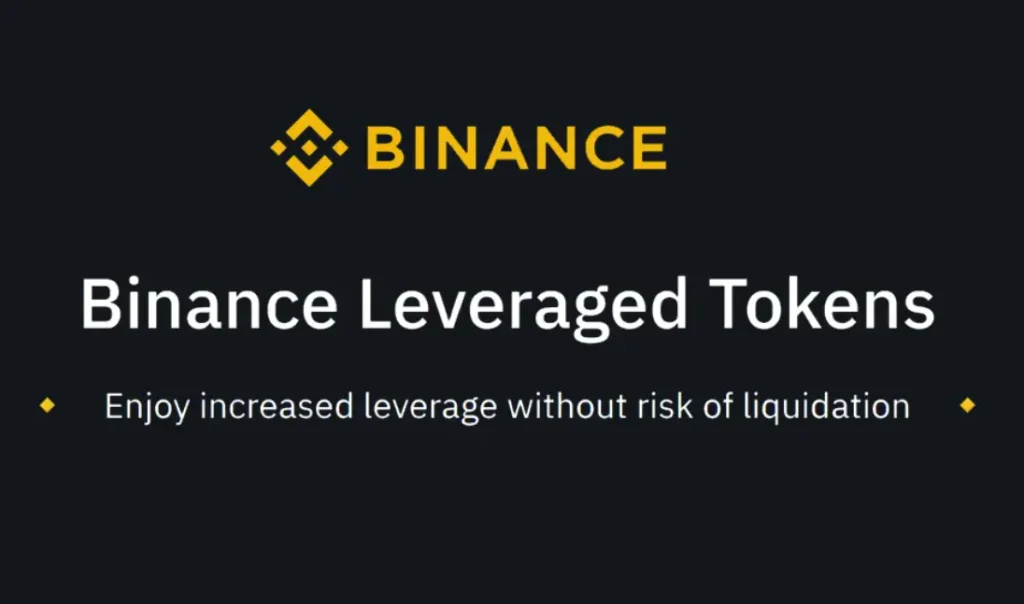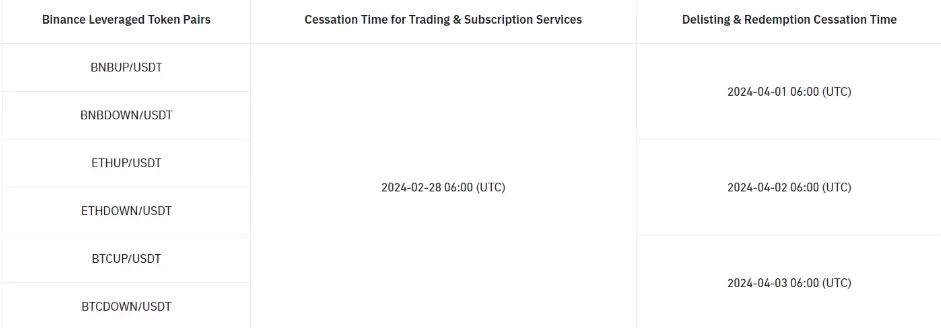Binance exchange will discontinue support for a subset of its leveraged tokens that are associated with Bitcoin, Ether, and BNB starting April 3.

On February 19, Binance declared its intention to discontinue support for leveraged tokens coupled with Tether. Affected are the following leveraged tokens: BTCUP and BTCDOWN, ETHUP and ETHDOWN, and BNBUP and BNBDOWN.
At 06:00 UTC on February 28, the cryptocurrency exchange will suspend trading and subscription services for the three pairings of leveraged tokens. All trade orders for the leveraged tokens mentioned by Binance will be “automatically removed” on the specified date.
Consequently, users will only be able to place orders after that. Before the specified deadline, Binance urged its users to exchange the leveraged tokens they currently hold for alternative assets.

The exchange then announced that beginning on April 1 and continuing through April 3, it would progressively delist the tokens and cease redemption. Users will have the opportunity to redeem their tokens before the delisting date, according to Binance.
Nevertheless, if users redeem their tokens after the designated deadline, the exchange has declared that it will convert the tokens into USDT by their delisting date value. Within twenty-four hours, Binance will transfer the tokens to the users’ accounts and withdraw the leveraged tokens from the users’ wallets.
Leveraged tokens issued by Binance are derivative instruments that grant investors leveraged exposure to the underlying cryptocurrency assets. The tokens, which symbolize a collection of perpetual contract positions, are subject to the volatility of prices observed in the perpetual contract market.
Binance claims that leveraged tokens provide crypto traders with collateral-free exposure to leveraged positions. Additionally, this eliminates the need for them to uphold a maintenance margin level and mitigates the risk of liquidation.
Binance cautioned that trading leveraged tokens carries inherent risks, such as “the consequences of price fluctuations in the perpetual contracts market, premiums, and funding rates,” notwithstanding the advantages.
